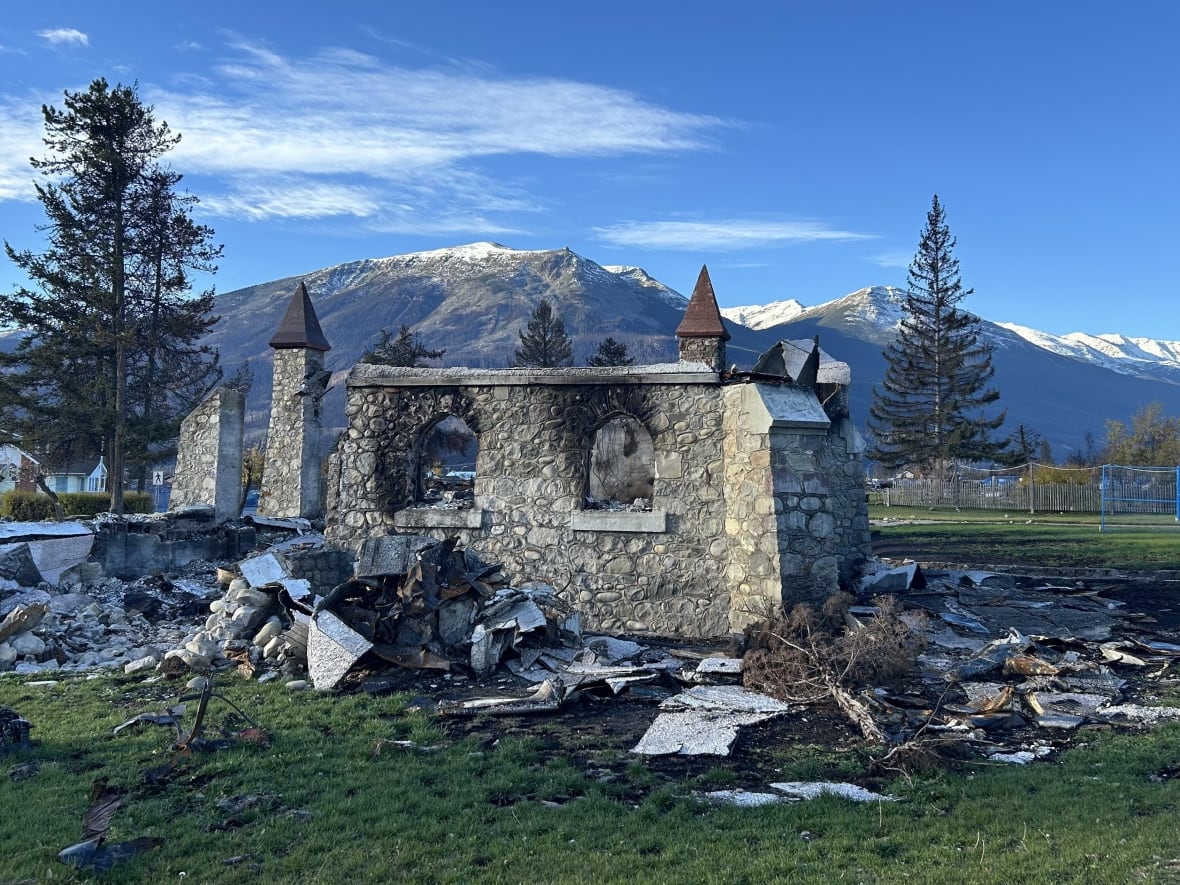Jasper wildfire review recommends clarifying expectations among governments, agencies
Report released almost full year after large wildfire reached townsite
Better defining jurisdictional boundaries and improving co-ordination between agencies are among about two dozen ways the Municipality of Jasper could improve its wildfire response, a new report says.
On Thursday, the town released an after-action review of the 2024 Jasper wildfire, which examined the effectiveness of the municipality's response plans and identified gaps and strengths. The review states that its purpose is not to assign blame.
Among several recommendations, the report suggested clarifying expectations and jurisdictional concerns between the municipal, provincial and federal governments, as well as Parks Canada and provincial agencies like Alberta Wildfire.
"Provincial involvement added complexity to the response," the report says.
Responding to emergencies, like wildfires, is typically a provincial duty, but Jasper falls within federal jurisdiction because it's in a national park. Officials from the three levels of government previously expressed how navigating those jurisdictions complicated the recovery effort.

The Alberta government wasn't responsible for leading the wildfire response in this case, but it "regularly requested information and sought to exercise decision-making authority," the report says.
Alberta Wildfire supported firefighting operations and participated in the incident management team, the report says. But the jurisdictional overlap "created political challenges that disrupted the focus of incident commanders," taking their focus away from directing the wildfire response and re-entry as they spent time managing questions and issues.
The report noted, however, that mutual aid agreements and solid working relationships allowed for "strong operability of municipal, provincial, federal and non-governmental partners."
Pre-established protocols between the municipality and Parks Canada, and "external support teams" arriving swiftly reinforced firefighting capacity and ensured a unified response, the report says.
"We're looking to continuously improve as one municipality," Bill Given, Jasper's chief administrative officer, told CBC News late Thursday afternoon. "We want to ensure that we continue to build out our capacity, and that we take every opportunity to learn from the past and incorporate those learnings to be better prepared in the future — and more effective."
CBC News has requested comment from Alberta Wildfire, Forestry and Parks Minister Todd Loewen and Parks Canada.
The report, prepared by two consulting firms hired by the municipality, was released nearly a full year after a large wildfire reached the Jasper townsite, about 315 kilometres southwest of Edmonton.
The fire destroyed 358 structures in Jasper — about one-third of its total buildings. Firefighter Morgan Kitchen was killed after being struck by a falling tree.
The Insurance Bureau of Canada estimates the fire caused about $1.2 billion in insured damage.
The after-action review focuses on emergency plans the municipality has in place for wildfire, evacuation and incident management, inter-agency co-ordination and resource allocation and the command post and emergency co-ordination centre, the report states.
Firefighters asked for feedback
It only focuses on federal and provincial jurisdiction when it overlaps with that of the municipality, such as the unified command. The consultants did not review the post-fire recovery efforts.
From February through March, the firms examined seven of the municipality's emergency management plans and conducted online surveys about deployment issues, receiving input from 138 firefighters and 115 incident management team members. They also hosted 68 people from various government agencies and the private sector, who were directly involved in the response, at a day-long in-person workshop.
The municipality has learned from other Alberta communities that have suffered from wildfires, Given said, listing Slave Lake and Fort McMurray as examples.
The review offers other communities to learn from this wildfire, too, he said.
Some of the recommendations would require help from other agencies or levels of government, so Given said the municipality is only focusing on those within its control.
Federal Minister of Emergency Management and Community Resilience Eleanor Olszewski has "taken stock" of the report, her communications director Mathis Denis told CBC News in an email.
The department will work with the municipality and "all our local and provincial counterparts" to rebuild Jasper better, Denis said.
Report suggests creating re-entry framework
The roughly 5,000 Jasper residents spent weeks away from home after the wildfire, before they were allowed back in to see the town.
As firefighters worked on dousing the flames and further protecting the town, municipal officials were figuring out what benchmarks had to be met before letting people back in, and how the reintroduction would work.
The review suggested the municipality develop a comprehensive re-entry plan it can have on hand, in case an emergency arises that requires evacuation. It says it should outline critical steps, "trigger points," resources and agency roles, which could in turn speed up decision-making.
Given says that such a framework could have helped the municipality last year. "We couldn't agree more," he said.
Protecting buildings
The report also made a couple of suggestions around buildings in the town. It says the municipality could explore mandating that local businesses and homeowners have to implement FireSmart initiatives, and could also evaluate whether it would have to offer supports or give incentives to encourage participation.
FireSmart Canada is a national program that tries to reduce communities' vulnerability to wildfires.
The review also recommends lobbying at the provincial and federal levels to update building codes so that structures must be made with materials that reduce fire spread.
Last year, during a second media tour of Jasper after the fire, emergency personnel told CBC News that fire crews had to knock down some buildings because embers from the flames had ignited some of the cedar-shake roofs.
"Whether the municipality or elected officials choose to engage in that advocacy is a decision that's yet to come," Given said.
With files from Emily Williams and Emma Zhao


